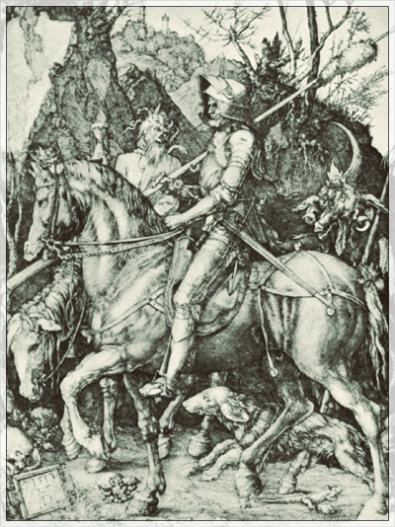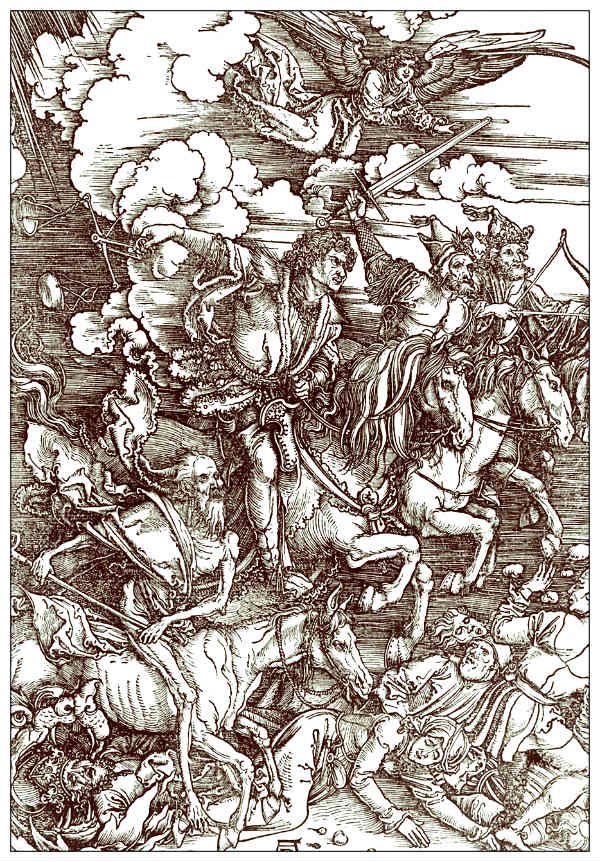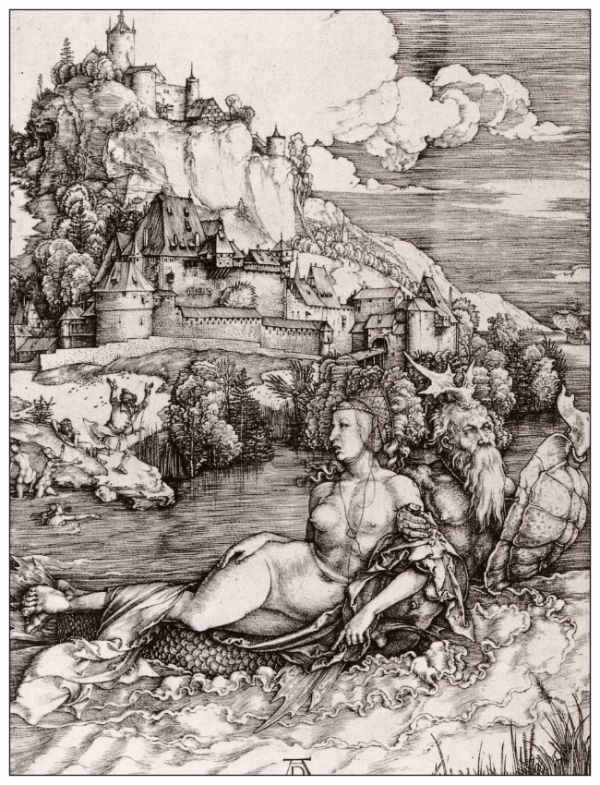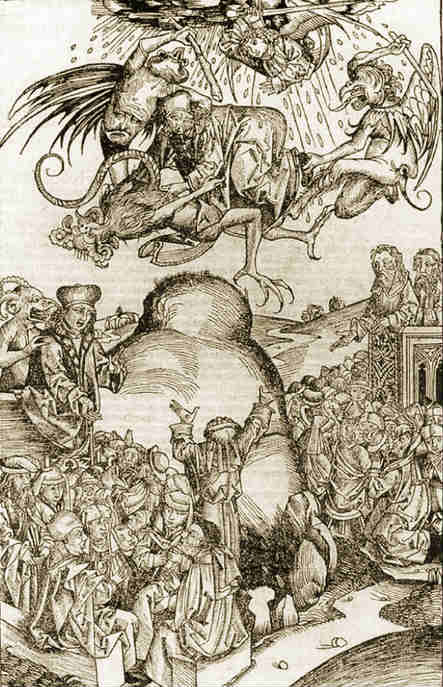Search:: Artists Alphabetically Artists by Country Artists by Century Artists by Movement
Northern Renaissance Engravings
Albrecht
Durer is know for his engravings as well as his paintings. The
Knight, Death and the Devil by Albrecht Durer is an engraving on copper. It is one
of Durers greatest masterpeices. According
to author Jennie Ellis Keysor "The
stern, intelligent men of the time, who were ready to face any danger
in order to bear themselves according to their notions of right, are
well represented in this splendid mounted knight. What though Death
reminds him by the uplifted hourglass that his life is nearly ended? or
that Satan himself stands ready to claim the Knight’s soul? There is
that in this grand horseman’s face that tells of unflinching purpose
and indomitable courage to carry it out against the odds of earth and
the dark regions besides. One of our greatest art critics says of this
work, “I believe I do not exaggerate when I particularize this point as
the most important work which the fantastic spirit of German Art has
produced.”
.

His first great series was the Apocalypse—pictures to illustrate the
book of Revelations. Such a subject gave Durer ample scope for the use
of his imagination. Then came the story of Christ’s agony twice
engraved in small and large size. These were followed by still another
series illustrating the life of Mary. This series was especially
popular, for it glorified family life—the family life of the Germans,
so worthy, so respected. To be sure, Mary is represented as a
German woman tending a dear German child."

The Four Horsemen, from The Apocalypse by Albrecht Dürer


The Antichrist 1478 by Michael Wolgemut
Important Words, People, Phrases, Characteristics related to the Northern Renaissance Art Movement - allegorical painting, rebirth, invention of oil painting, Hieronymus Bosch, Limbourg Brothers, Desiderius Erasmus, Robert Campin, Jan Van Eyck, Jean Fouquet, Albrecht Dürer, Johannes Gutenberg, Johann Reuchlin, Martin Luther, rise of the merchant class, Protestant Reformation, Calvinisim, glazing, impasto, scriptorium, illuminator, invention of the printing press, woodcuts, engravings, Antwerp School, Guild of Saint Luke, commerce, Flemish School, Northern Europe, Antwerp School, Flanders, Bruges, renewed interest in classical learning, mythological scenes, genre painting, landscapes, portraits, moralizing overtones, human vices, lust, paradise, spirituality, piousness, living a simple life, reform, Human Reasoning, tradesmen at work, idyllic scenes of peasants, playing games, feasting, linear perspective, \Heliocentric Theory, humour, satire, spiritually significant, illuminated manuscript, idealized biblical themes, scriptorium, emotion, illuminator, iconoclast, Age of Discovery, Virgin and Child, axonometric drawing, curiosity about the natural world, realistic use of colours and light, Old Testament stories, Gospel parables, The Blackdeath, Christian symbolism
Require more facts and information about Art history? Dig around every nook and cranny of the known universe for information this subject. Search Here
☼☼☼☼☼
© HistoryofPainters.com If you like this page and wish to share it, you are welcome to link to it, with our thanks. updated 3/7/2017